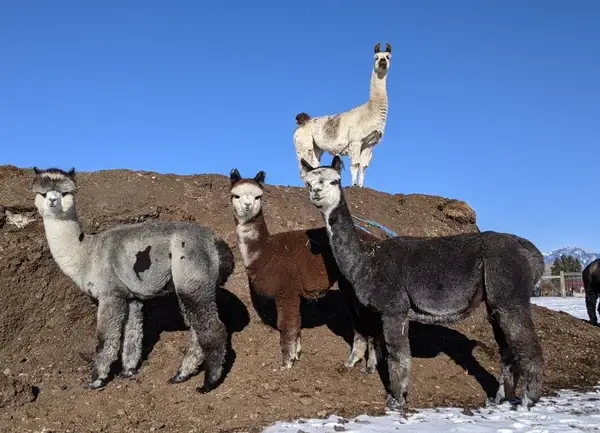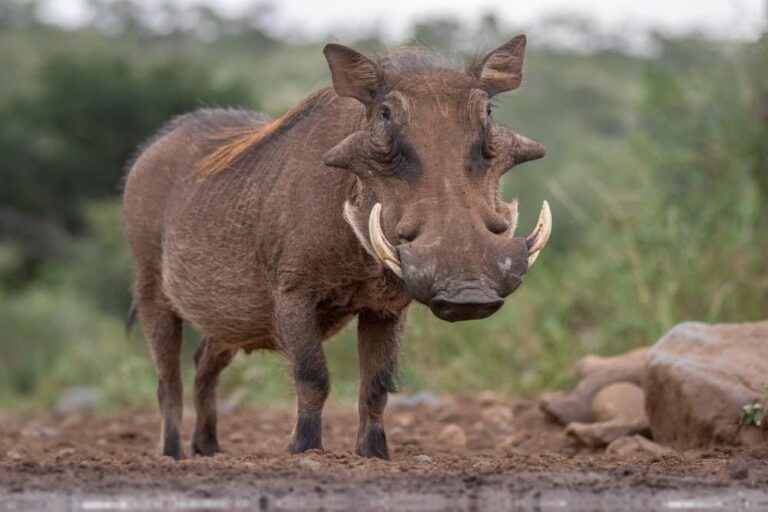Llama: An In-Depth Exploration of This Fascinating Species
The llama (Lama glama) is a domesticated South American animal known for its gentle demeanor and its significance to local communities as a pack animal. Llamas are members of the camel family, and they have been integral to Andean cultures for thousands of years. This article delves into the llama’s scientific classification, physical characteristics, habitat, behavior, diet, reproduction, predators, conservation status, and their unique relationship with humans.
Contents
Scientific Classification
- Kingdom: Animalia
- Phylum: Chordata
- Class: Mammalia
- Order: Artiodactyla
- Family: Camelidae
- Genus: Lama
- Species: Lama glama
Llamas belong to the camel family, Camelidae, which includes alpacas, guanacos, and vicuñas. Unlike their larger camel relatives, llamas are native to the South American Andes and have evolved to thrive in mountainous terrain.
Physical Characteristics

Llamas are medium-sized, slender-bodied animals recognized for their long necks, large eyes, and soft, woolly coats. Here are some of their defining physical traits:
- Height: Llamas stand about 1.7 to 1.8 meters (5.6 to 5.9 feet) at the top of the head.
- Weight: Adult llamas typically weigh between 130 and 200 kg (290–440 lbs).
- Coat: They have a thick, woolly coat, which is usually light brown, white, gray, or black, often with patches of various colors.
- Ears: Their large, banana-shaped ears are another distinctive feature.
- Feet: Llamas have padded feet with two toes, which allow them to walk comfortably on rocky, uneven terrain.
Habitat and Distribution
Llamas are primarily found in the Andean Mountains’ high altitudes, spanning countries like Peru, Bolivia, Argentina, Ecuador, and Chile. These animals have adapted to the harsh environments of the Andes, including cold temperatures and steep terrain. In modern times, llamas have been introduced to other parts of the world for farming and pack use, such as North America, Australia, and Europe.
Behavior and Social Structure

Llamas are highly social animals that live in herds. They exhibit hierarchical behavior, with dominant individuals taking leadership roles.
- Communication: Llamas communicate through vocalizations, body postures, and facial expressions. One of the most recognized behaviors is their tendency to spit when threatened or annoyed, though this is more common in conflicts between llamas than toward humans.
- Intelligence: Llamas are intelligent animals that can learn simple tasks quickly, making them excellent pack animals.
Diet
Llamas are herbivores with a specialized diet that allows them to thrive on various plant materials. Their diet includes:
- Grasses and Hay: Llamas primarily graze on grasses but can also consume hay when grass is unavailable.
- Herbs and Shrubs: Llamas eat various vegetation in the wild, including shrubs and herbaceous plants.
- Low Water Requirements: Llamas have adapted to survive in arid environments, requiring relatively little water compared to other livestock.
Their efficient digestive system allows them to extract coarse and fibrous plant material nutrients.
Reproduction and Life Cycle
Llamas have a unique reproductive cycle compared to many other mammals:
- Mating: Llamas do not have a fixed breeding season and can reproduce year-round. Females ovulate upon mating (induced ovulation).
- Gestation: The gestation period is about 11.5 months, after which the female gives birth to a single offspring called a “cria.”
- Parental Care: Crias can stand and walk within an hour of birth and are nursed by their mothers for around 5 to 6 months.
- Lifespan: In the wild, llamas can live up to 15–20 years, but in captivity, they may live up to 30 years.
Predators and Threats
In their natural Andean habitat, llamas face few predators due to their large size and ability to defend themselves. However, potential predators include:
- Mountain Lions: These large cats pose the greatest threat to llamas in the wild.
- Wolves and Coyotes: In areas where llamas have been introduced outside their native range, wolves and coyotes may pose a threat.
- Human Activity: While llamas are not commonly hunted, habitat loss due to human activities can indirectly threaten their well-being.
Conservation Status
The llama is not currently considered at risk of extinction. As a domesticated animal, they are widely bred and utilized by humans. However, their wild relatives, such as the guanaco and vicuña, face more significant conservation concerns due to habitat loss and poaching.
Evolutionary History
Llamas, along with other members of the camel family, originated in North America millions of years ago. Fossil evidence suggests that ancient camelids migrated from North America to South America around 3 million years ago during the Great American Biotic Interchange. Over time, llamas adapted to the high-altitude regions of the Andes, evolving into the species we see today.
Their wild ancestors, guanacos, are still found in the wild and are believed to be the original stock from which domesticated llamas were bred approximately 4,000 to 5,000 years ago.
Relationship with Humans
Llamas have played a vital role in Andean cultures for thousands of years. Historically, they were domesticated by the indigenous people of the Andes to serve as pack animals, providing transportation across rugged mountainous terrain. In addition to their utility as pack animals, llamas have been used for their:
- Fiber: Llama wool is prized for its softness and warmth. It is less oily than sheep’s wool, making it hypoallergenic.
- Meat: Llama meat has been consumed by some indigenous cultures, though it is not as common as other livestock.
- Guard Animals: Llamas are used to guard livestock, such as sheep, from predators. Their natural alertness and ability to fend off threats make them effective guards.
Today, llamas are often kept for their wool, as pets, and as tourist attractions in many parts of the world.
Interesting Facts About Llamas
- Llamas can carry up to 25–30% of their body weight, making them excellent pack animals for transporting goods.
- They are known to hum as a way of communicating with each other, especially between a mother and her cria.
- Llamas are closely related to alpacas, though they are larger and have a different coat texture.
- Unlike camels, llamas do not have humps but share the camel’s ability to endure harsh conditions.
Conclusion
Llamas are remarkable animals that have adapted to thrive in the challenging conditions of the Andes. Their domestication has made them invaluable to human societies for centuries, and their unique physical characteristics and behaviors continue to fascinate people worldwide. As functional animals and beloved companions, llamas represent a unique blend of utility and charm, symbolizing resilience and cooperation between humans and nature.
With their rich evolutionary history, social behaviors, and important role in Andean cultures, the llama continues to be a subject of fascination and respect. Whether appreciated for their wool, utility as pack animals, or friendly demeanor, llamas hold a special place in history and the modern world.
- Are Rottweilers Good With Kids? Reasons & Training Tips - 17 September 2025
- How Long Are Dogs Pregnant: Complete Guide - 16 September 2025
- German Shepherd Doberman Mix: Info, Pictures, Care & More - 11 September 2025







